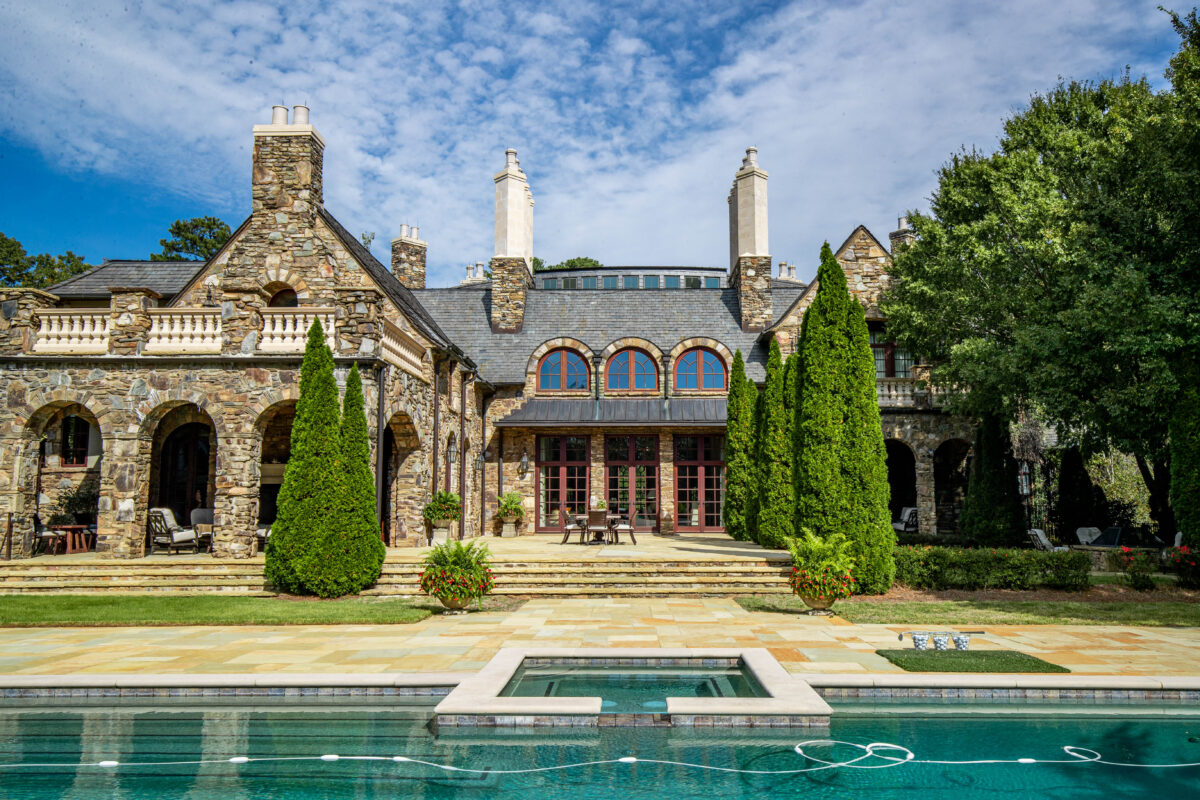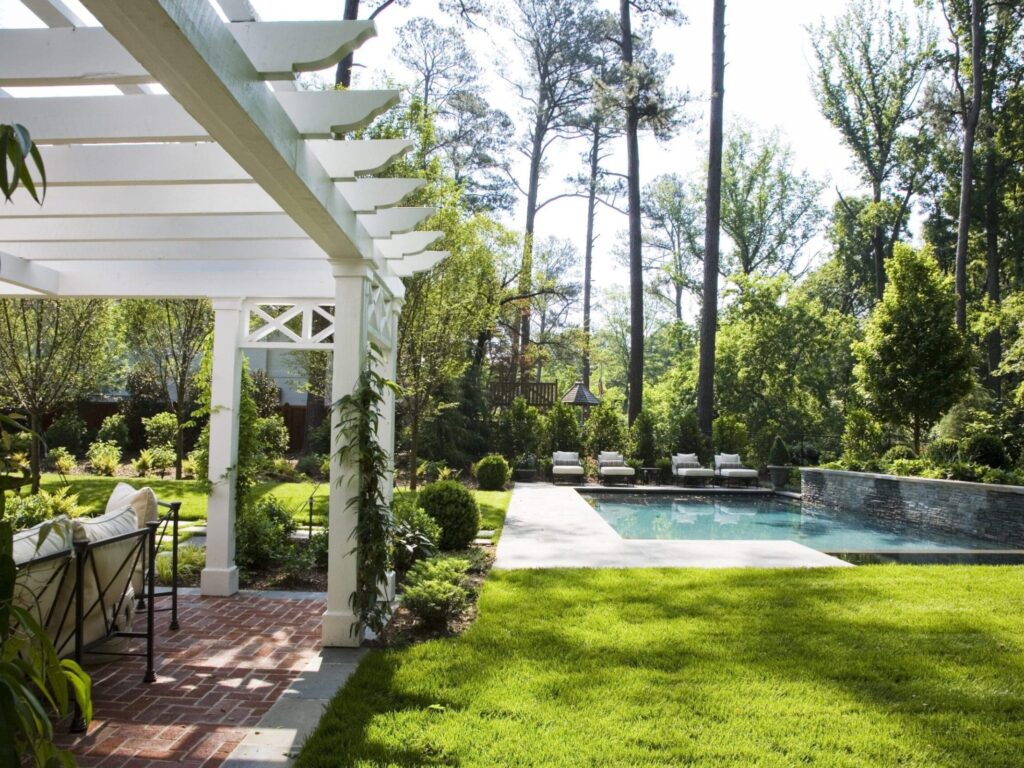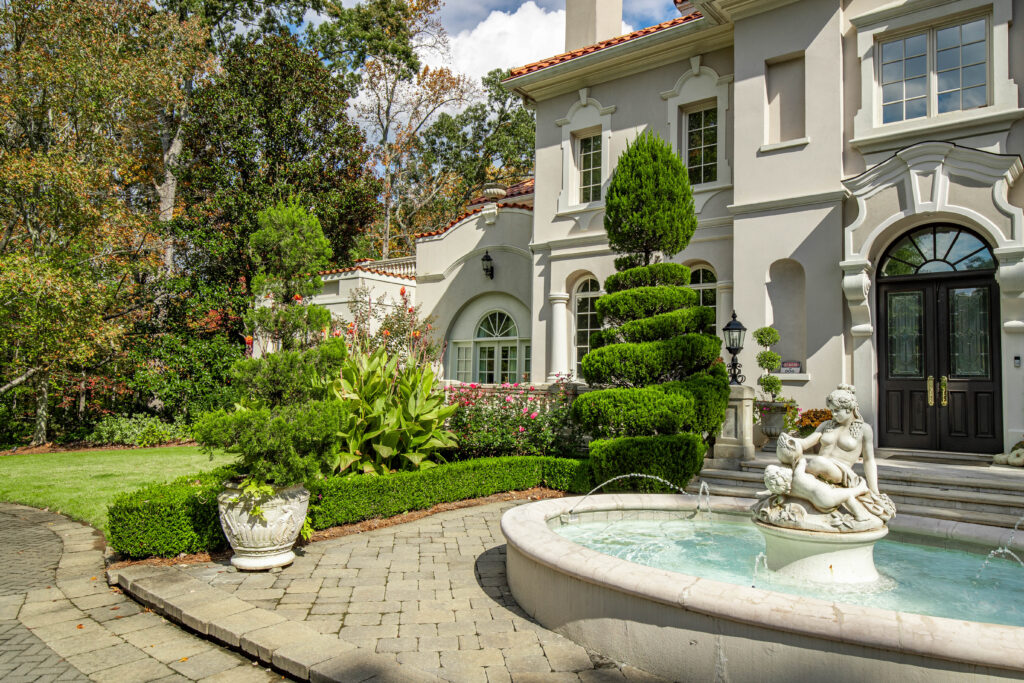
National luxury landscaping trends, while inspiring, often fail when applied universally. A one-size-fits-all approach can be a costly mistake, especially when considering a unique environment like Atlanta’s. What looks stunning in one region might fall flat or even fail in another. This oversight can lead to breathtaking spaces that are not built to last, wasting time and resources.
Regional understanding is crucial. By tailoring trends to local conditions, such as Atlanta’s climate, available materials, and specific design priorities, we can create premium outdoor living spaces that are both breathtaking and built to last.
The Pitfall of Ignoring Regional Differences in Luxury Landscaping
Property owners often apply national luxury landscape trends (e.g., minimalist desert gardens, tropical patios) without considering local conditions, leading to problems. A cactus garden in humid Atlanta or Southwest stone in rainy Georgia will likely fail. Plants struggle, materials deteriorate, and the design may feel wrong. Atlanta’s environment differs from Phoenix or Los Angeles; ignoring its humidity, rainfall, and cultural aesthetic causes designs to wash out, dry out, or clash. Ignoring regional differences is like wearing a winter coat on a tropical beach, it simply doesn’t fit.
Atlanta vs. National Landscape Design Trends: Why Regional Context Matters

Atlanta has its own flavor of luxury landscape design, influenced by the Southern climate and culture, while national trends cast a wider net of ideas. Here’s how they compare in some crucial areas:
Climate & Environment: Humid Heat vs. Diverse Conditions
Atlanta’s Climate: Atlanta is in a humid subtropical zone with long, hot, moist summers. It averages at approximately 50 inches of rain annually. Winters are mild but can include freezing weather and light snow. Atlanta’s red clay soil and rolling terrain mean slow drainage, requiring careful landscape planning on slopes.
National Perspective: U.S. climates vary greatly, from arid deserts to wet Pacific Northwest zones, and from frigid northern winters to tropical heat. Luxury landscape designs adapt to these differences; e.g., Arizona focuses on drought tolerance, while New England prioritizes snow-resistant structures. National trends often stem from diverse environmental contexts.
Why It Matters: Climate determines plant success, material longevity, and outdoor space usability. For example, trendy succulent gardens popular in Southern California might rot in Atlanta’s humidity. Conversely, Atlanta’s lush lawns would fail in drought-prone areas. Technology, too, is climate-influenced: smart irrigation systems differ in configuration. In Atlanta, sensors pause watering during summer thunderstorms; in drier regions, they prevent waste during dry spells.
Comfort is also a factor, making features like the outdoor fire pit quite popular, especially for cooler nights. In Atlanta, fire pits are great for crisp fall or mild winter nights, but during hot summers, shade and cooling elements are key to comfort. Atlanta luxury landscapes often feature shade structures like pergolas and water features for cooling. Your local designer can incorporate fans, misting systems, or ample shade to ensure the summer months don’t become oppressive in your backyard.
Plants & Materials: Native Beauty vs. One-Size-Fits-All
Atlanta’s Palette: Atlanta landscapes are known for being green and lush, featuring a mix of elegant ornamental plants and hardy natives like Cherokee roses, azaleas, Japanese maples, and dwarf magnolias for year-round visual interest.
Material-wise, Atlanta designers often use materials suited to Georgia’s red clay soil, such as permeable pavers and French drains. Georgia granite and native hardwoods are common in hardscapes and custom features, blending with local architecture and holding up well in the climate.
National Trends in Plants/Materials: National trends include succulent gardens, exotic tropical plants, ultra-modern materials (concrete, metal), and sustainable native planting. Corten steel, porcelain tile, and imported stone are popular.
Why It Matters: Choosing plants unsuited for Atlanta’s climate (e.g., olive trees) or materials prone to issues (e.g., light-colored sandstone) can lead to problems. Atlanta’s heavy seasonal rains necessitate durable, often textured, and well-drained materials.
Leveraging Atlanta’s native plants and locally sourced materials ensures a harmonious, lower-maintenance, and thriving premium outdoor living space.
Design Priorities & Lifestyle: Outdoor Living Atlanta-Style vs. Elsewhere
Atlanta’s Priorities: In Atlanta, warm weather makes outdoor entertaining and relaxation a priority. Backyards are extensions of the home, making outdoor living areas key to personalizing your home. This often includes expansive patios with full outdoor kitchens, fire pits or fireplaces, and comfortable lounges. Pergola-covered patios with built-in kitchens and fire features create distinct outdoor “rooms.” Mosquito control systems and fans/heaters are common requests to ensure these outdoor spaces stay comfortable and safe.
Another Atlanta must-have is functional and beautiful landscaping. High-end landscapes include lush lawns or garden nooks for gatherings, pools or water features, and lighting for evening parties. Designs prioritize year-round enjoyment, with features like shaded verandas for summer and fire pit areas for chilly evenings.
National Outlook: National design priorities vary. Colder regions focus on curb appeal for warmer months and simpler patios for winter. The sunbelt prioritizes sun protection and water conservation (less lawn, more hardscape/drought-tolerant features). In most areas, “outdoor rooms” and seamless indoor-outdoor flow are top trends in luxury landscaping, with demand for outdoor entertainment spaces.
Why It Matters: Outdoor space design should reflect local lifestyle and climate. In Atlanta, an unshaded deck might be unusable in August, making retractable canopies or pergolas worthwhile. Recognizing Atlanta’s lifestyle, from fall football BBQs to spring garden parties, allows for tailored luxury landscapes. A nationally inspired design might emphasize a feature you won’t use as much. High-end landscaping in Atlanta means comfort, hospitality, and year-round functionality, not just looks.
Aesthetics and Style: Southern Elegance Meets Modern Landscape Design Trends
Atlanta Aesthetics: Atlanta’s landscape design style often blends Southern elegance and contemporary luxury, reflecting our city of historic neighborhoods and modern high-rises. Upscale residential areas appreciate Southern garden charm – manicured hedges, flowering trees, and brick pathways. Traditional architecture often complements classic elements like symmetrical beds or formal rose gardens. Increasingly, designers fuse this charm with modern touches, creating a “modern Southern” style that balances comfort and heritage with clean lines and innovative features – bold aesthetics complementing the region’s climate and architectural character.
National Styles: Nationwide, luxury landscape aesthetics vary widely. Ultra-modern minimalism is popular on the West Coast, while naturalistic designs emulating meadows are gaining traction. Coastal regions favor tropical looks, and desert luxury inspires earth tones and sculptural plants. The key national trend is personalization: homeowners want their outdoor space to reflect their chosen style, from Tuscan to Zen.
Why It Matters: Style is subjective and contextual. A sleek, ultra-modern landscape ideal for Miami might look out of place in Buckhead. Homeowners want their luxury landscape to feel at home in its environment. While incorporating modern trends is encouraged, execution might differ. In Atlanta, this means choosing plant colors that complement our natural backdrop and preserving features like old oak trees, valuing the region’s natural beauty.
Blending Atlanta’s inherent style with national trends offers a unique landscape. Sustainable landscaping with native Georgia plants in a modern layout, for instance, creates a cutting-edge, eco-friendly design that belongs here. Experts note that Southern landscape design traditions have always evolved as a response to local geography, climate, and culture, making adaptation the time-tested way to ensure a graceful and pleasing landscape.
Tailored Solutions: Blending National Landscape Design Trends with Atlanta Style

By now, the solution should be clear: marry the best of national luxury landscaping trends with local Atlanta expertise. In practice, what does that look like? It means tailoring every exciting idea to fit our climate, our soil, and your personal tastes. Here’s how you can achieve a harmonious blend:
Here’s how to tailor high-end landscaping to Atlanta’s unique climate and culture:
- Work with Local Experts: Professional landscape designers familiar with Atlanta’s environment can advise on climate-appropriate, high-end features, materials, and native plants. They understand factors like topography and drainage unique to our southern climate.
- Adapt and Adopt Landscape Design Trends: Incorporate premium outdoor living trends by adapting them for Atlanta’s weather. For instance, a fireplace might be part of a covered, breezy porch for summer, or a zen garden could use hardy ornamental grasses and Southern stone.
- Embrace “Best of Both Worlds” Design: Combine national trends like modern water features and smart lighting with Atlanta’s native plants and classic materials for a unique look. Consider sustainable options like rainwater harvesting systems that also fit the Southern garden aesthetic.
- Plan for Year-Round Enjoyment: Ensure your luxury landscape is comfortable in Atlanta’s climate year-round. This involves choosing pergolas, mature trees for summer shade, heating elements for cool days, and plants that offer visual interest across all seasons.
- Reflect Your Lifestyle and Atlanta’s Culture: Design your landscape to meet your needs and fit local norms. For homeowners, this means facilitating garden parties; for commercial properties, it means impressing visitors while remaining practical for the weather. The goal is a functional, enriching outdoor space that suits you and your location.
Elevate Your Landscape with a Local Touch
Don’t settle for a cookie-cutter luxury landscape. You deserve to harness landscape design trends as unique as Atlanta itself.
Reach out to our expert team for a personalized consultation. Let’s explore tailored design solutions that fuse upscale trends with the charm and resilience of our region. Elevate your outdoor living experience with a custom luxury landscape design that truly reflects you. Your dream yard awaits, and we’re here to help you build it.
